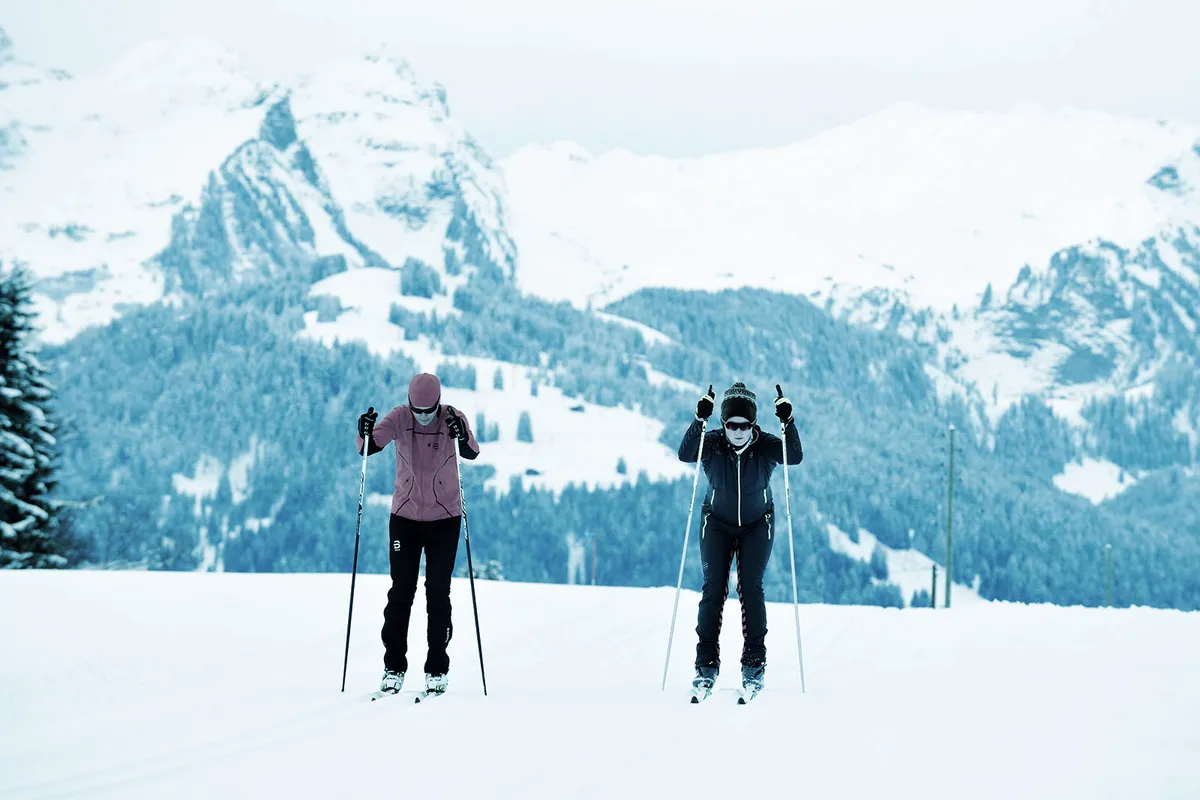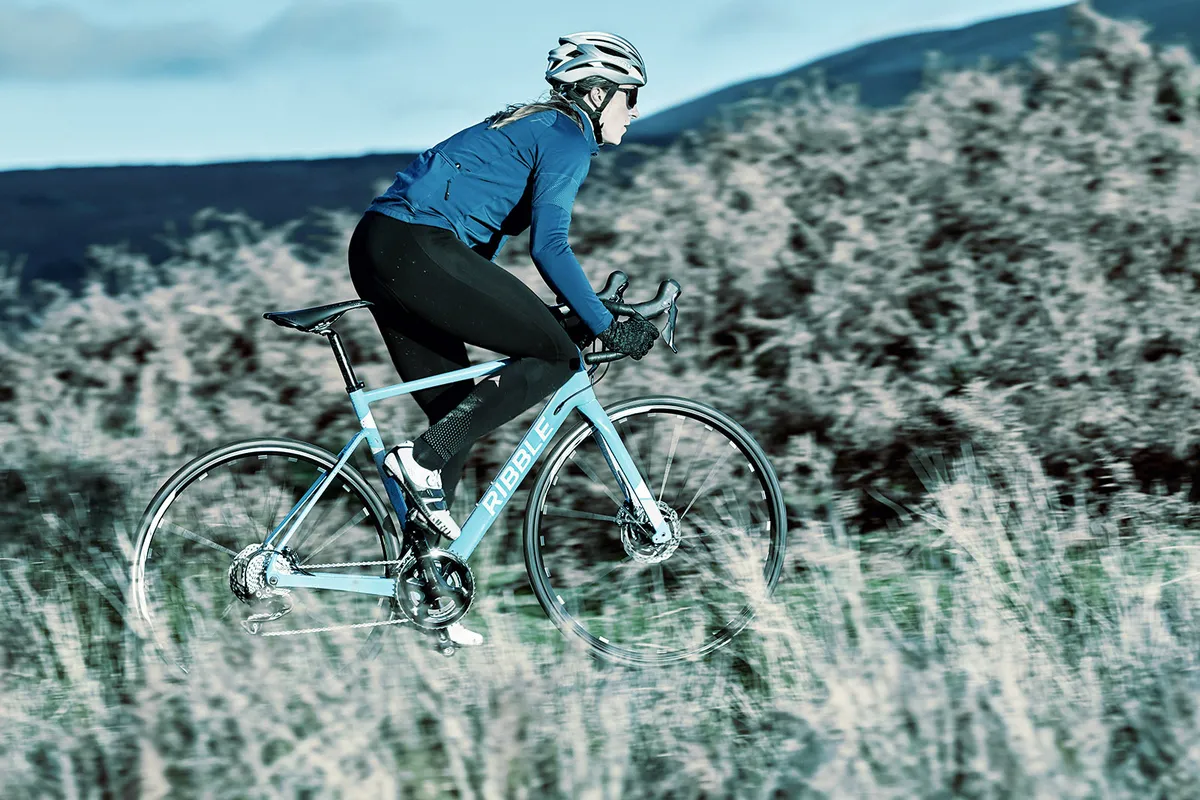Cyclists who hibernate over winter are making a big mistake.
Although we worry that cold weather makes us vulnerable to injuries and flu, many scientists believe lower temperatures trigger amazing health benefits, from burning fat and raising your metabolism to fighting Seasonal Affective Disorder and boosting mental resilience – a vital resource now more than ever.
Perhaps we shouldn’t be so surprised. Ever since our ancestors spread out from the tropical climates of Africa and Asia, humans have adapted to cooler climates.
The normal temperature of the human body is 37°C, but on exposure to the cold your heart rate and metabolism rises.
That’s not all. Peripheral vasoconstriction decreases blood flow to the extremities to reduce heat loss, your breath quickens, oxygen floods to the brain, blood is channelled to your muscles, glucose is released and muscle activity – whether through shivering or the urge to exercise – increases.
This burns extra energy, sharpens the mind and warms the body, which is why skiers and open-water swimmers report such exhilarating winter highs.
White fat vs brown fat

The cold also activates a mysterious substance called ‘brown fat’, found in the neck, shoulders, chest and back.
Whereas normal ‘white fat’ stores energy from food, brown fat burns energy to produce heat. “One of the ‘selling pitches’ for brown fat is that it is ‘the fat that makes you thin’,” explains Professor Mike Symonds of the University of Nottingham, whose research suggests brown fat could help prevent weight gain and diabetes.
“Brown fat has this unique molecule within its mitochondria called ‘uncoupling protein’. When activated by cold exposure, it can rapidly produce large amounts of heat. A gram of brown fat will produce 300 times more heat than a gram of any other tissue in the body when stimulated.”
Your inner furnace gets stoked surprisingly quickly. “If you put your hand into cold water, within five minutes you can see the temperature of the brown fat increasing,” says Symonds.
Brown fat burns glucose (sugars) and lipids (fats), which is why its activation could aid body composition and blood sugar levels.

“Anything that makes you cold will stimulate your brown fat, and that should be beneficial in keeping weight down, minimising fat deposition and improving glucose regulation.”
Anthropologist and journalist Scott Carney, author of What Doesn’t Kill Us, says the more you cycle in the cold, the easier it becomes.
“We are the descendants of evolutionary winners, so in the past, when we were wearing fur skins and a snowstorm came, our bodies couldn’t say, ‘I’ll get ready in a couple of weeks’.
"Your body immediately ramps up your metabolism to fight the cold, then builds up brown adipose tissue [brown fat] for longer-term thermogenic resilience. Over time, you’ll expand the temperatures in which you’re comfortable.”
Carney goes on to explain, “Thermogenic stress also encourages mental growth: if you ride in the cold, you will develop the emotional resilience to deal with other issues as well.”
Cold conundrum

To enjoy the physical and mental rewards of cold exposure, commit to more winter bike rides, chilly walks and cold showers, and try wearing one less layer at home.
However, there is a catch: as soon as you start exercising in the cold – as opposed to just experiencing the cold – your body begins to warm up.
That means you’ll enjoy an improvement in your cycling performance, but also a reduction in the specific health benefits related to cold exposure.
According to Professor Mike Tipton of the Extreme Environments Lab at the University of Portsmouth, cold exposure raises metabolism and activates brown fat for a bonus health boost, but the fat-burning effects of a winter bike ride will always be greater.
“You shiver at five or six times your resting metabolic rate, but during exercise, the heat you produce is 20-25 times your resting metabolic rate. Shivering can coexist with exercise, but it disappears once you start exercising at an oxygen consumption over about 1-1.2 litres per minute – that’s pretty light exercise – because your shivering is suppressed and muscle activity takes over.”
Don't be afraid of the cold

So what are cyclists to make of this cold conundrum? The message seems to be this: it’s good to expose yourself to the cold, whether through cold showers or chilly walks, and don’t be afraid of getting cold during sections of your winter bike ride, or when you’re cleaning your bike at the end.
Cold exposure will deliver a raft of benefits – from burning extra calories to boosting resilience – and trigger key adaptations that’ll help you stay warm on your next bike ride. But during your winter ride itself, it’s best to keep your body warm to maximise the rewards from your ride.
The good news is that it’s much easier to stay warm on winter rides than fair-weather riders assume. Professor Tipton says it’s rare for cyclists to suffer serious cold-related issues, such as hypothermia.
“I did the Tour of Flanders once on a cold day with strong winds and driving rain. That combination was sufficient to overwhelm the heat production of a host of people. The problem was that they were getting slower.
"That cooled their muscles and nerves, which meant they were less able to exercise and produce heat, so they got even slower – a descending spiral. But mostly, cyclists will still generate enough heat to stay warm.”
The key is to ride at a high enough intensity to keep warm. The magic number seems to be about 60 per cent of your VO2 max – a moderate intensity. Studies suggest a person can maintain a core temperature above 35°C for up to seven hours if their exercise intensity is greater than 60 per cent of their VO2 max.
“It’s all about heat balance,” says Professor Tipton. “Provided you’re producing more heat than you’re losing, you’ll be fine. When you cycle, you can easily produce between one and two kilowatts of heat. As long as they’re wearing decent clothing, people exercising in the cold don’t suffer in terms of a fall in deep body temperature.”
Nevertheless, cyclists face unique challenges. “Beware of the first 15-20 minutes when it’s freezing cold and you start on the flat, because as soon as you get above 15km/h you maximise your convective heat loss but you’re not yet generating any heat,” explains Professor Tipton.
“Always make sure you warm up before you go out. Put your bike on a turbo: all that’s needed is to raise the body temperature by about a third of a degree – hardly anything – and all of a sudden the blood will flow.”
Winter is the season when quality clothing, such as warm bib tights and winter jackets, is crucial. Mammals increase the insulation around their skin by storing fat and thickening their fur, and we do the same through clothing.
“The body has no idea what the environmental temperature is,” says Professor Tipton. “All it knows is the temperature of the skin because it has sensors there, so we need to concentrate on that microclimate around the skin.”
Good layering, quality fabrics, effective ventilation to avoid sweat accumulation and snug seams to prevent the flushing of cold air beneath garments are all recommended.
Waterproof clothing, including jackets and gloves, is essential on rainy days because the thermal conductivity of water is 25 times that of air. And always wear windproof clothing: in temperatures of 4°C, a 10mph wind will mean you experience the equivalent of -1°C, while in 20mph winds, you’re effectively riding at -7°C. Arms are particularly susceptible, so arm warmers are a good thing to take with you.
Fear and clothing

Cyclists also suffer from cold extremities. “When your body detects cold, it shuts down blood flow to the hands and feet,” explains Professor Tipton.
“Wearing gloves and booties reduces the heat loss, but the best thing is to ensure you exercise strongly enough to stop your core temperature falling.” This is especially important because cold exposure reduces finger dexterity.
“I would be much more worried about bike control and my ability to brake than performance,” adds Professor Tipton.
There’s little consensus over whether the cold impacts aerobic performance. One study suggested maximal heart rate reduces by 10-30bpm when deep body temperature is lowered by 0.5-2°C.
But another paper found that time to exhaustion while cycling at 70 per cent VO2 max was 42 per cent longer in the cold versus a warmer environment.
Cold resilience seems to be highly individual, dependent on height, weight, fitness and other factors.
But Professor Tipton recommends staying warm: “If you get cold, exercise will feel harder because your muscles are less flexible. Everything points towards going out warm and staying warm. As far as the body is concerned, in that microclimate it doesn’t even know you’re cold.”
Physiologist and nutrition consultant Richard Tucker says you should also adapt your fuel sources over winter.
“During the winter, a cyclist may adopt a certain style of riding, so it may mean some cyclocross or mountain biking, but it will usually entail a slowing down in intensity or effort.”
This often leads riders to think they need less fuel, but Tucker says cold-induced thermogenesis (CIT) means your body burns more calories in a bid to keep warm.
“An athlete performing a lower-intensity ride in the warmer months may be oxidising more fat than carbohydrates, yet in cooler months carbohydrates may be the dominant fuel source. So it’s important to make sure that your carbohydrate stores are continuously topped up throughout your rides.”
Many riders fear getting ill over winter, but research by Professor Neil Walsh of Liverpool John Moores University suggests most lab-study evidence doesn’t support the idea that exercising in the cold poses a greater threat to immune function.
Indeed, exercising in the cold releases the mood-enhancing hormones beta-endorphin and noradrenaline to help ward off seasonal depression.
But, to stay healthy while cycling, Tucker recommends vitamins A, C, E, B6, B12 and a vitamin D supplement.
“Vitamin D plays an important part in immunity, and insufficiency is common in athletes, particularly if exposure to sunlight is limited.”
Navigating the winter months requires intelligence and adaptability: maximising the health benefits of cold-weather exposure, while fighting the negative effects of the cold on performance. But no cyclist should be afraid of the cold.
“Through clever use of clothing and warm-ups, you’ll have no problem cycling even in the very coldest conditions,” concludes Professor Tipton. “And there are plenty of benefits, too.”